The Apple Thunderbolt Display Review
by Anand Lal Shimpi on September 23, 2011 2:56 AM EST- Posted in
- Displays
- Mac
- Apple
- Thunderbolt
- Thunderbolt Display
Dissection
If you haven't gathered by now, the Thunderbolt Display isn't a regular monitor - it has a lot of components inside that you'd typically only find in a full fledged computer. Being the curious cat I am, I wanted to see inside. Apple isn't too fond of us poking around inside their review samples, but luckily the Crabtree Valley Mall Apple Store just got Thunderbolt Displays in so I hopped in the practical-wagon and grabbed one in the name of science.
Apple has an incredible fascination with using magnets in its designs. What it enables are some pretty neat enclosures, particularly on its displays. The glass front of the Thunderbolt Display is actually identical to what's used on the 27-inch LED Cinema Display and iMac. The glass is held to the chassis via several very strong magnets. To remove the glass you'll need to use suction cups:
Behind the glass front is the actual LCD panel itself. The LCD and backlight are enclosed in a single unit. What we're interested in is behind the LCD however. Unplug a few cables and remove a grounding screw and the LCD unit is easily cast aside. Behind it are two discrete PCBs:
The PCB on the left is the monitor's power supply. Looking at another half-wave rectifier isn't on my to-do list this time, so we turn our attention to the right PCB. This is the board that handles all of the IO on the Thunderbolt Display. All of the screws we've removed thus far just need a T9/T10 torx bit.
The Thunderbolt Display's motherboard is full of controllers driving all of the rear facing IO ports. Contrary to what we originally posted, I now believe this is the same Light Ridge controller we've seen on other Macs (not the MacBook Air):
The external Thunderbolt cable actually continues inside the display and ends up at an internal Thunderbolt port. The cable terminates at the port and then is routed via traces on the PCB to the Eagle Ridge chip:
The other controllers are sprinkled around the PCB, although there's enough space between all of them to make routing nice and easy. The beauty of designing PCBs for monitors like this is you have tons of room to work with.
Pericom provides a PCIe x1 to 4-USB-port adapter on the board:
The internal speakers are driven by a combination of an ST-NXP 0161ET USB audio controller and an Analog Devices ADAV4601 audio processor. The ST-NXP controller sits on an internal USB interface, while the ADAV4601 dangles off of it.
That wraps it up for the front of the PCB. Around back there's a collection of stereo amps as well as the GigE (Broadcom BCM57761) and FW800 (LSI L-FW643E-2) controllers.
There's nothing immediately apparent in the PCB design that would point to the cause of the issue we saw with the Promise Pegasus interfering with the Thunderbolt Display's USB audio controller. The root cause must be exclusive to the Pegasus.








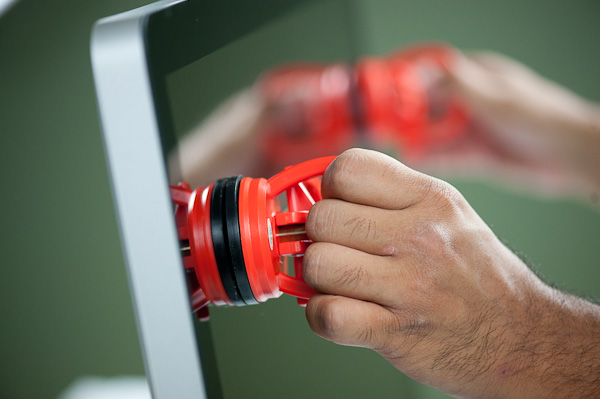
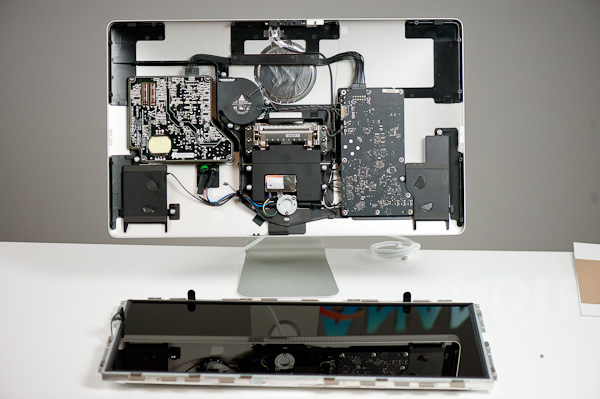
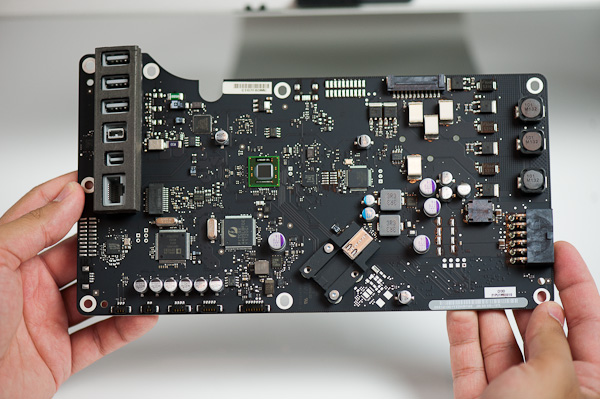
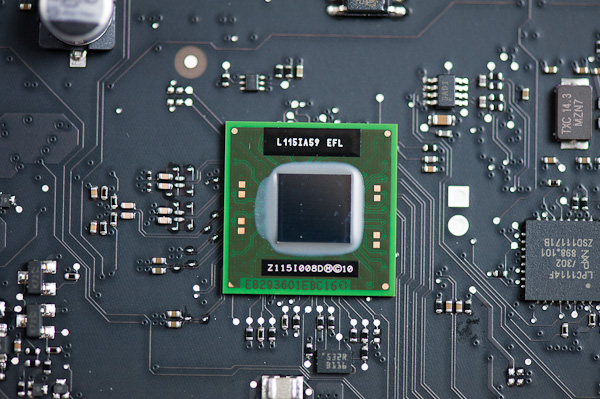
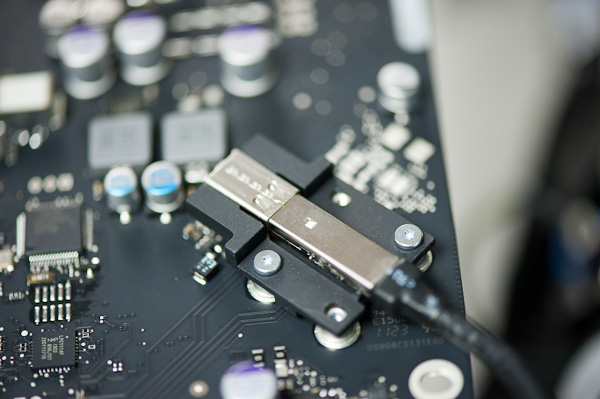
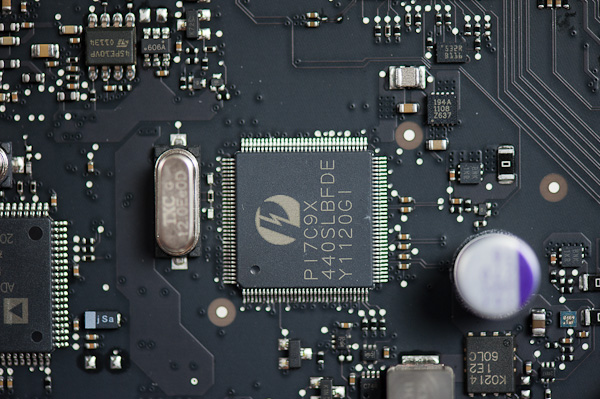
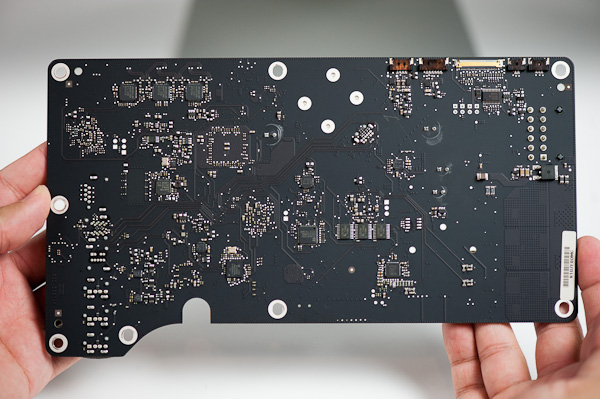
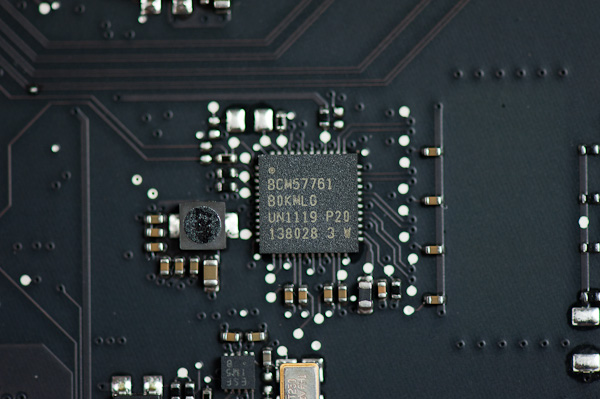








275 Comments
View All Comments
snow peak - Saturday, July 21, 2012 - link
I have similar annoying issue here, while playing songs which in iTunes on my new MBA(mid-2012) out via TB display's speaker.The audio data stream is routed from MBA to ThunderBolt display, and just one apple's USB keyboard connected to ThunderBolt display.
You might be interested in trying experiment without external storage attached on TB display, and get same result with mine.
The symptom is little static noise came with music play at beginning, and then the music gradually merged by static noise after a few of minutes or a couple of hours.
I think it caused by hardware power ground layout issue, so no confidence apple could fix it via firmware update and no idea if I should return both my new MBA and TB display.
This is really annoying!!
paulrmc - Tuesday, August 7, 2012 - link
Hi Anand,I don't know whether you looked at comparing directly connected USB drives to same drives hooked up to the TB Display. I was shocked today when I found out the difference. I'm using a USB 2.0-connected LaCie 2GB drive as a secondary drive to my dual-SSD mid-2011 Mac mini Server. Using BlackMagicDesign's Disk Speed Test I came to following results:
- directly connected to the back of the Mac mini: 29MB/sec write, 33 MB/sec read
- connected to the TB Display: 7.5MB/sec write, 11.7MB/sec read.
I'm running OS X Mountain Lion 10.8 on the mini, and the tests were repeatable, after fresh power down - reboot cycles.
Any ideas? Anyone?
Paul
hiscore - Tuesday, August 20, 2013 - link
I have just discovered the source of my Thunderbolt display distorted audio issue. It is being created by my Drobo which is interfaced through iSCSI. I can replicate the issue every time when moving files to it. Granted the files are moving from my Pegasus array, so I guess there may still be some questions.I have been in constant contact with Apple support, Promise support, and Drobo support. Hopefully a fix will be supplied from someone.
highscore - Tuesday, December 23, 2014 - link
Update:It wasn't the Drobo.
I no longer run a drobo and still encounter the issue. The problem seems to occur whenever there is high I/O through Thunderbolt. I have 3 Promise RAIDs and one Lacie 8Big all on one TB bus, with the TBD on the second bus and the problem still occurs. It really just points to a USB buffer issue. The same issue that Anandtech hypothesized in this review.
krakago - Saturday, June 7, 2014 - link
Unfortunately this display is now a dinosaur, and a very expensive one. As of 2014 there are finally more devices and computers appearing with Thunderbolt, but peripherals tend to be very expensive and meanwhile USB 3 has become pretty much ubiquitous. That makes this Apple display unacceptably crippled. If it were cheap that could be overlooked, but it sells for a premium price. I've been looking for a display to use with my Macbook Pro, and comparing the price and features of the Apple offering to their competitors I can't see a good reason to choose the Thunderbolt Display. Apple really needs to bin this thing and bring out a modern version.